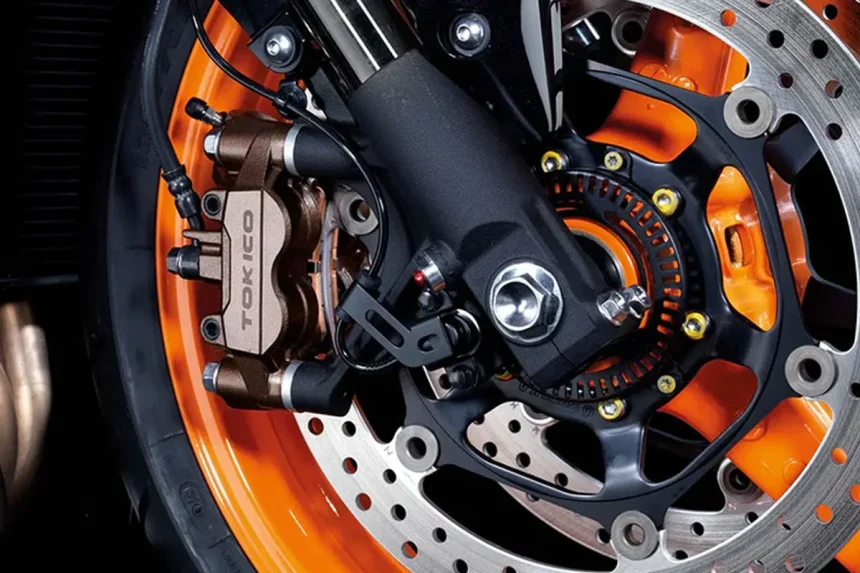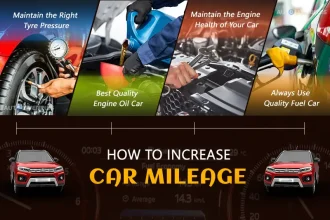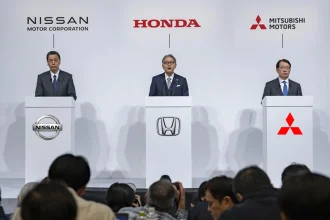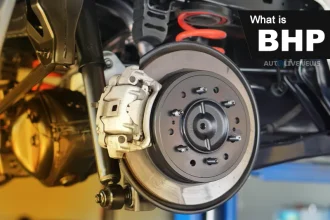Have you ever experienced driving on the open road when you suddenly had to apply the brakes to escape an unforeseen obstacle? It seems hard to maintain control of your bike in this situation. This sudden bike stop can ruin your comfortable journey.
The Anti-lock Braking System, or ABS, is the perfect solution for this. Did you know what is ABS in a bike? An ABS is made to help you stay in control during such heart-stopping situations.
When a bike has ABS, it can help you apply instant brakes and stop safely on the road. Now, once you understand what is ABS in a bike, let us examine how ABS functions and why it might be the greatest addition to your next bike.
What is ABS in a bike?
The ABS full form in bikes stands for “Anti-lock Braking System.” It is a system that regulates the pressure of the brakes and prevents your wheels from locking. Thus. ABS enables safer and regulated stops by mechanically adjusting the brakes to prevent the wheels from locking.
Think about applying unexpected brakes while driving on a wet road. In essence, ABS in a bike provides an easier and more secure ride by preventing such collisions. This is a helpful feature in emergencies as it enables you to prevent severe accidents.
Now, if you ask, What does ABS mean in a Bike? It is a reliable system that enables riders to brake safely under erratic circumstances. ABS in a bike promotes safety, control, and trust in addition to stopping. Knowing what ABS is in a bike and realizing how important it is to lower the risks involved with high-speed stopping.
Key Components of ABS in Bikes
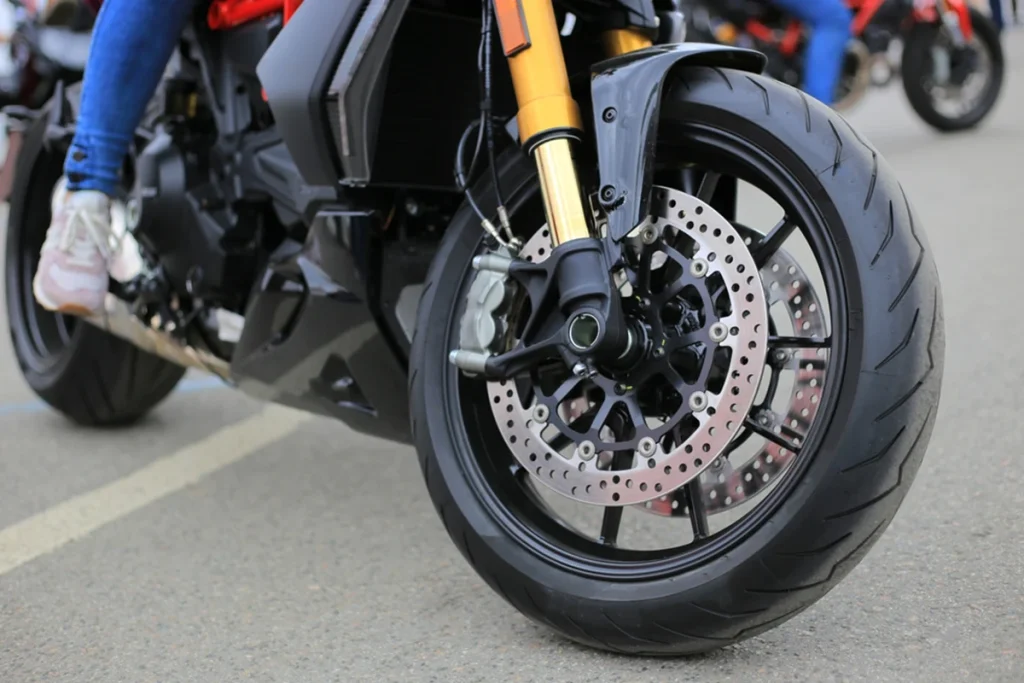
When you are learning about what is ABS in a bike, examining the main parts of a bike is crucial. However, every component contributes in the following ways to the effectiveness of ABS:
- Speed sensors: They are used to track the movement of the wheel and identify when a wheel is ready to lock up. Speed sensors are an essential component of the response to the question “What is ABS in a bike?” as they ensure that this feature can react to abrupt changes in speed.
- Electronic control unit: This unit is called its brain. It majorly controls the timings of ABS after processing data from the speed detectors. The ECU plays a crucial role in any braking conditions because it makes sure that the system responds quickly to prevent any accidents.
- Hydraulic Valves: These valves modulate the brake force when necessary. This helps to avoid wheel lock. It also ensures that the brakes are applied effectively. What is ABS in a bike without hydraulic valves? It could not ensure seamless stops.
- ABS Modulator: This feature regulates brake pressure while preventing sliding.What is important in a bike is recognizing the function of the modulation, which strikes a balance between management and safety.
Importance of ABS on a Bike
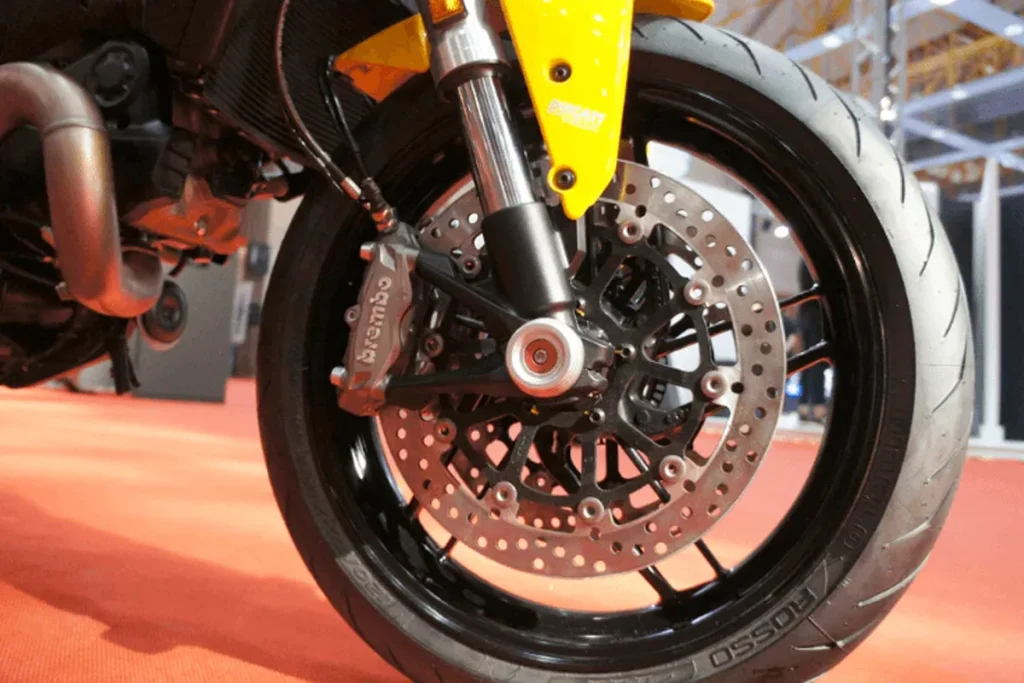
After recognizing what is ABS in a bike? Let’s discuss its importance.
- Safety: It enables you to rapidly stop your bike without losing management. It is an essential feature in an emergency.
According to the research, bikes equipped with ABS have a considerably lower accident rate. It provides stability in uncertain circumstances.
What is Dual-Channel ABS in a Bike?
Being aware of the differences between single-channel and dual-channel ABS is crucial to understanding what ABS is in a bike. The single-channel ABS only uses the front-wheel ABS technology, while the dual-channel ABS offers more equitable and efficient performance because it works across both wheels.
Dual-channel ABS equips the two wheels to manage unexpected braking circumstances. It is especially helpful in wet or irregular roadways because it makes it possible for both wheels to stop securely and effectively. If you’re wondering what is ABS in a bike? Consider getting a dual-channel ABS for ultimate protection.
Difference Between Single and Dual-Channel ABS
It is helpful to understand the differences between single-channel and dual-channel systems to better appreciate what ABS is in a bike.
- Single-Channel ABS: Since front-wheel braking supplies the majority of the stopping power, single-channel ABS just keeps an eye on the front wheel. Although this channel provides complete safety, rear-wheel lock-ups are not fully prevented.
- Dual-Channel ABS: A dual-channel ABS ensures controlled braking by installing ABS on both wheels. This feature maximizes safety while providing efficient safety options. Therefore, dual-channel is the best option for higher safety.
How Does Dual-Channel ABS Work in a Bike?
The Sensors can measure both speeds when you apply brakes. After processing this data, e ECU prevents the wheels from jamming. This ensures to provide a seamless stop in any tough condition.
Pros and Cons of ABS in Bike
Pros of ABS in Bikes
- Improved Safety: ABS technology makes driving safer by reducing the chance of crashing.
- Less insurance expenses: Insurance companies usually provide discounted rates on bikes with ABS systems.
- Higher sale value: An ABS increases the market value of the bike on which it is installed. Therefore, bikes without ABS can result in decreased resale value.
Cons of Abs in Bikes
- Increased Cost: Bikes with this feature are frequently more costly because ABS technology comes with certain additional parts.
- Repairs: The bike with an ABS may need extra maintenance. This is because it includes several additional components.
- Irregular stop timings: The purpose of anti-lock brakes is to provide safer braking in extreme circumstances. However, some drivers believe their ABS systems cause them to stop much earlier than in any normal circumstances.
Conclusion
In short, what is ABS in a bike? This brake technology gives riders oversight, security and comfort. ABS in a bike is an important element that every passenger should consider because it prevents skids and ensures effortless or controllable stops. Whether it is single-channel or dual-channel, ABS significantly improves your safety while driving. Selecting a bike with ABS might be one of the best choices you make for your future riding security and comfort.
Frequently Asked Questions ( FAQs)
Can we install ABS in a non-ABS bike?
Yes, some bikes can have ABS installed but it’s always preferable to get advice from an expert.
Is ABS required in bikes?
Although ABS is strongly advised to improve oversight and provide secure braking it is not mandated by a specific law.
Which bikes have ABS in India?
ABS is currently an essential option in a wide range of bike models in India. You may even ask for a list of selections from nearby dealers.
What are ABS and CBS on a bike?
Wheel lock-up is avoided by ABS (Anti-lock Braking System) and even braking is achieved by CBS (Combined Braking System), which evenly applies braking force to the tires.



